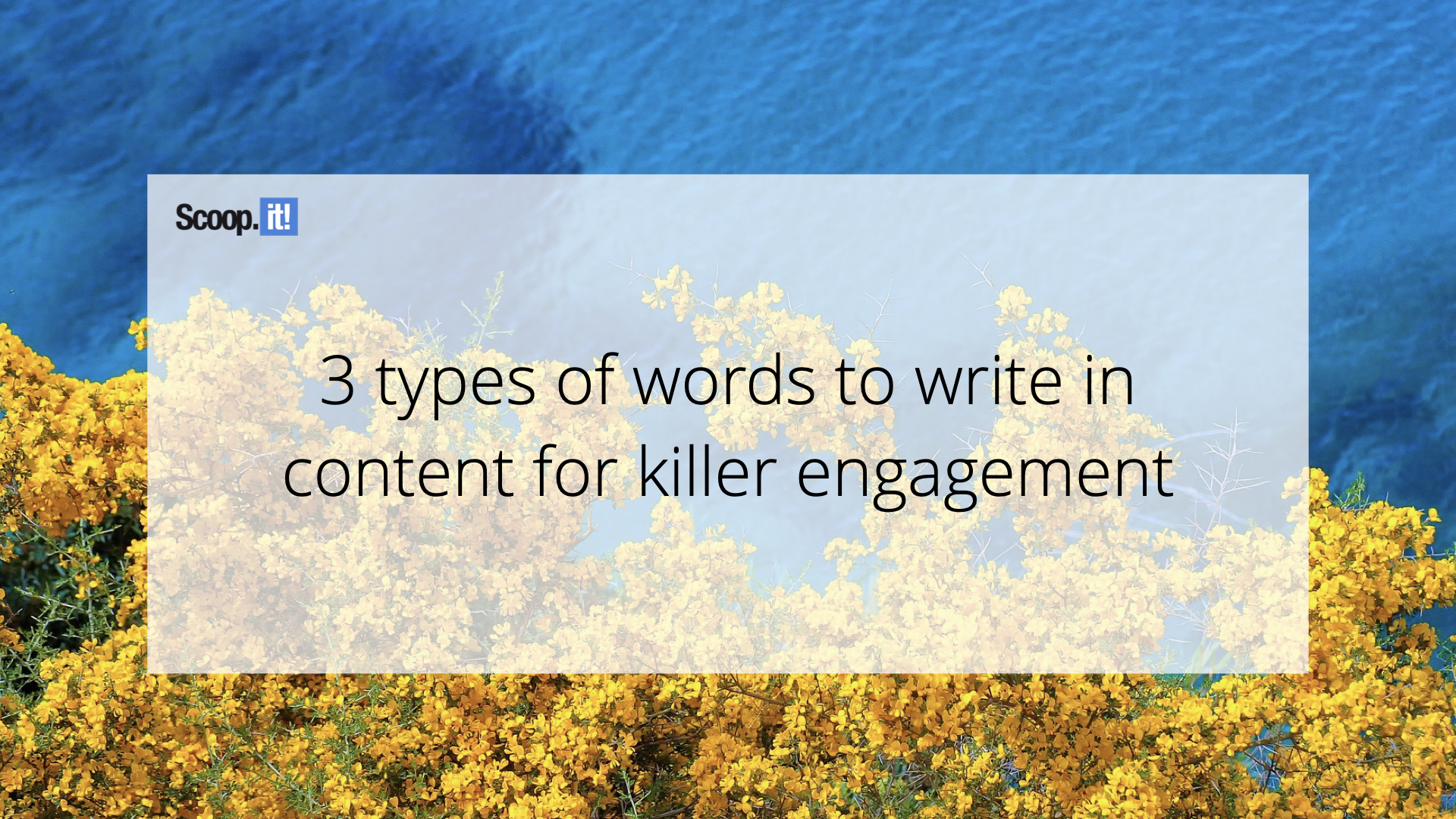
When it comes to content creation, marketers and SEO specialists consider its structure and optimization for traffic, higher rankings, and more efficient communication with the target audience.
They know what content formats are more traffic-potential than others. They understand how to structure the content for better usability, given that attention span is super short today and users scan, not read online texts
(Well, at least such is a widespread perception based on the oldy-moldy data that users read only 20-28% of the text on the average page.)
But let’s face it:
A rare marketer or SEO specialist bothers about what lexical items other than keywords to write in content so users would read, not scan it. Anxious about on-page SEO, E-A-T, backlinks, and other factors to please Google, we often forget about the most potent weapon to hook website visitors, engage them, and make them read our marketing texts through and through.
Words.
While SEO copywriting is about keywords, search intent, content usability, and delivering value, three certain types of words exist that can transform dull yet informative texts into engaging and persuasive content assets compelling readers to take action.
Why not consider them when writing and make your marketing content even more effective and convertible?
Here they go:
1) Transitional Words
Rob Powell, writer and content creator, nailed it in his article for Smart Blogger:
“The primary purpose of each paragraph you write isn’t to make a point, or to build your argument, or even to convey valuable information. It’s to get your reader to read the next paragraph.”
It’s all about creating a smooth reading experience when your every sentence flows into the next. Placing ideas and arguments into one content asset, you need to link them all together for readers to avoid friction and understand how those ideas relate to each other.
The #1 instrument to help here is transitional words.
These are words and phrases a writer uses to create a text flow, tie its parts into logical narration, and evoke a reader’s curiosity by hinting that something interesting is coming. Transitional words serve to engage readers and encourage them to keep on examining your content.
That’s what these words look like in online texts:
Also known as bucket brigades, they allow content writers to switch between paragraphs, create rhythm, and make a text sound smooth.
Many tools exist to help content creators check their writings for readability and understand if they use enough transitional words to make the content flow. Some online tools even read your text aloud so you could listen and better feel how your content sounds.
2) Power Words
While transitional words and phrases work for better readability and content flow, power words make your marketing texts influential and persuasive.
More than that, they allow you to influence the readers’ decision-making, therefore boosting your conversion rates. Isn’t that what we all want to get from business writings when planning our content marketing strategies?
But what are power words, and how to use them in content to make it convert like crazy?
Power words are persuasive lexical items that have strong meanings and trigger a response from readers, nudging them to take action.
That response can be positive or negative, depending on which power words you use in writings. These words are emotional, and a writer chooses them carefully depending on what he wants the reader to feel about the information: interest, excitement, fear of missing out, safety, curiosity, etc.
Power words make readers feel and visualize what you tell them in content.
Let’s take a piece out of Winston Churchill’s speech as an example. He used power words in every sentence to make the text sound so persuasive and inspiring for the audience:
Types of power words are numerous, but they all represent three groups:
- Those super seductive and nudging people to take action. Examples of such words in marketing texts: new, instant, how to, free, because, etc.
- Super emotional words that grab attention because they connect to people’s feelings. Here goes the example from Jon Morrow’s post implementing power words that address fear:
- Sensory words (more on them below), aka those making readers “see,” “hear,” and “experience” the picture you’re trying to “paint” with your content.
To get a better idea of the power words’ nature, types, and usage in content, here go your two must-check articles:
- Jon Morrow’s 801+ Power Words That Pack a Punch & Convert like Crazy
- Henneke Duistermaat’s 172+ Power Words: How to Write Persuasive Business Content (As Proven By Science)
3) Sensory Words
As seen from the name, sensory words relate to human senses:
These are active and descriptive words demonstrating action and portraying our experience of the world. They picture how we see, hear, taste, or smell everything around us, evoking the corresponding emotions when we read them in texts.
Henneke Duistermaat describes and explains sensory words best:
“When reading non-sensory words, your brain processes text. But when you read sensory words, different areas of your brain light up. Your brain processes sensory words as if you taste a sweet cake, as if you see a dazzling display of colors, as if you feel a rough texture.
Not only do these words work in text content, but they can also improve other content types like videos or webinars, influencing viewers’ emotions and perceptions.
Henneke determines five types of sensory words to use in texts, providing examples for each group:
- Visual words (gloomy, glitter, hazy, sparkling)
- Auditory words (roaring, buzz, serene, crashing)
- Smell/taste words (stinky, bitter, gooey, rotten)
- Tactile words (fluffy, slimy, woolly, hairy)
- Motion words (paralyzed, swirling, choppy, grab)
Savvy content writers spend months and years growing their vocabulary, developing their writing style, and making their assets sound classy. Why not follow their lead and try crafting texts that would captivate the audience and stand out from those same-looking articles we see online?
But there’s a catch:
Far from all words evoke senses and have power, influencing content readability and encouraging people to read. Many are boring. They are flabby. Redundant. When overused, they make your writings wishy-washy.
Stuffing your content with such words, you doom it to looking mediocre or even balderdash.
What are these words, and why do they have such a negative reputation among copywriters and content creators?
Bonus: Words to Try Avoiding in Content
Let me explain:
These words aren’t awful by themselves. And I don’t want to say they are tabooed to use in texts.
The matter is their overuse, placing them in the wrong context, or replacing more powerful words with them, therefore killing your content’s expertise and influence.
Some words are flabby when it comes to writing persuasive marketing content. Newbie authors often use them like fillers when they can’t find more professional definitions to express what they want to say.
What are these words?
- Passive voice overuse.
- Redundant -ly adverbs like really, truly, absolutely, mostly, totally, etc.
- So-called empty words, those giving no extra meaning to your writing: stuff, maybe, just, very, actually, things, other, many, great, etc.
- Weak and expletive grammar constructions a la there is/there are, of…of, and so on.
Such words and grammar constructions kill content rhythm, flow, and readability. Plus, they can influence your reputation as a specialist, primarily if you work with educational content like selling online courses or providing professional writing services.
In a Word:
Word choice takes a heavy toll on how the audience reads and perceives your writings. While some lexical items persuade readers to take action, others can discourage them from following your works and implementing your advice.
In this article, you’ve learned three types of words to consider when crafting content assets:
- Transitional words help you link content ideas and arguments to keep the audience interested in further reading for more information.
- Power words allow you to visualize a message and trigger a response from readers, nudging them to take action and therefore boost your conversion rates.
- Sensory words evoke emotions, helping readers experience your message through all senses and adding personality to your works.
The trick is to use them all at the right times.
They aren’t magic, and so they won’t turn your mediocre content into a masterpiece. Your content subject, quality, and relevance to your business and audience are what matters. And yet, these words can help you curate content and keep readers glued to it, engaged, and responsive to your marketing message.


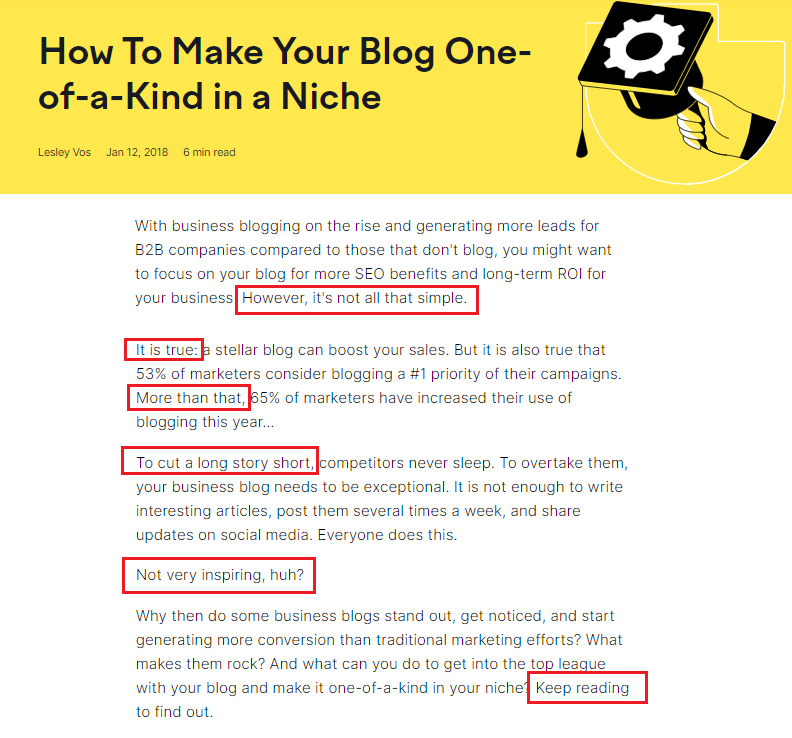
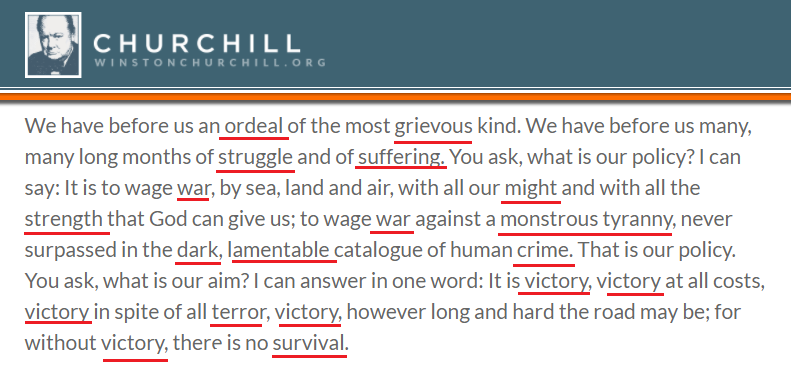
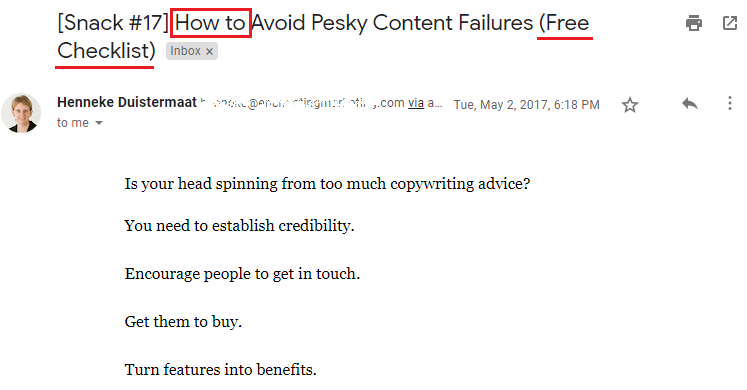
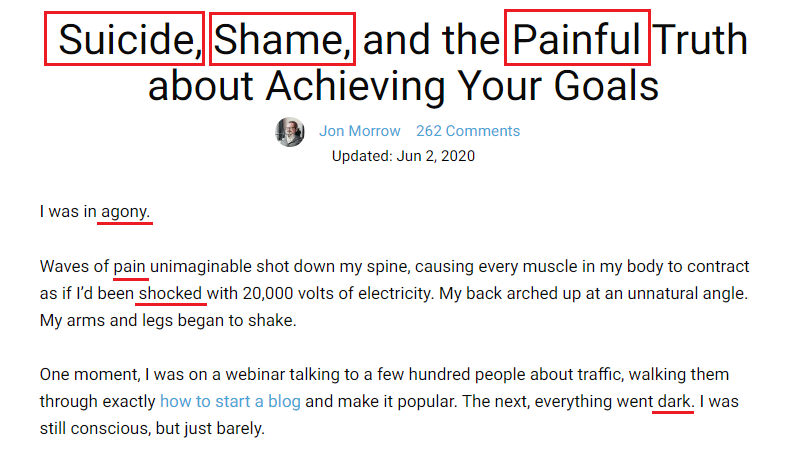
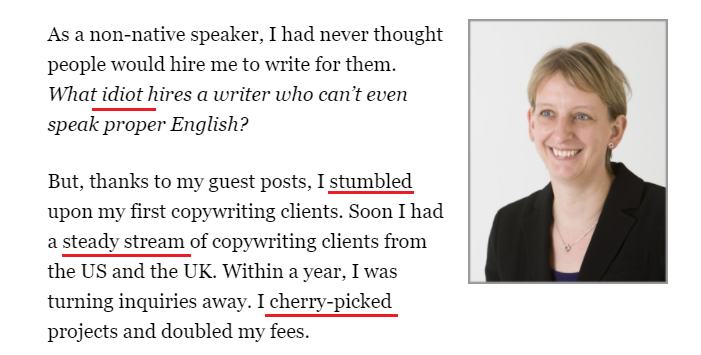
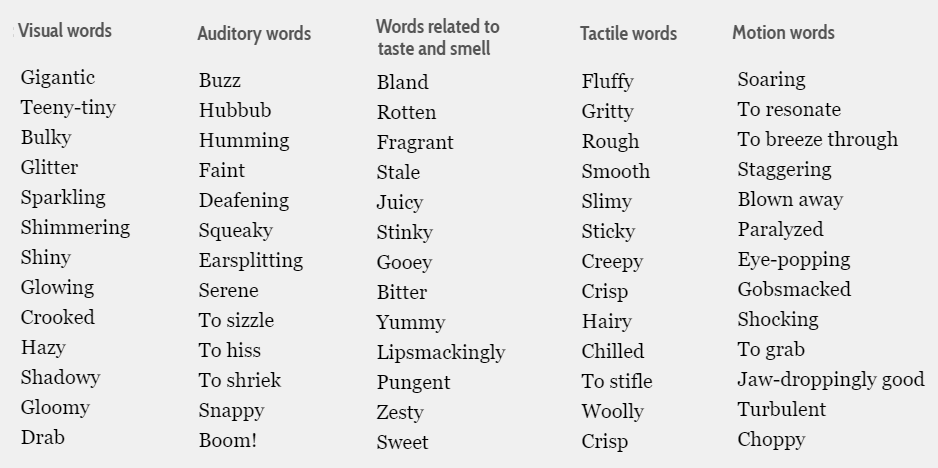

 (2 votes, average: 4.50 out of 5)
(2 votes, average: 4.50 out of 5)